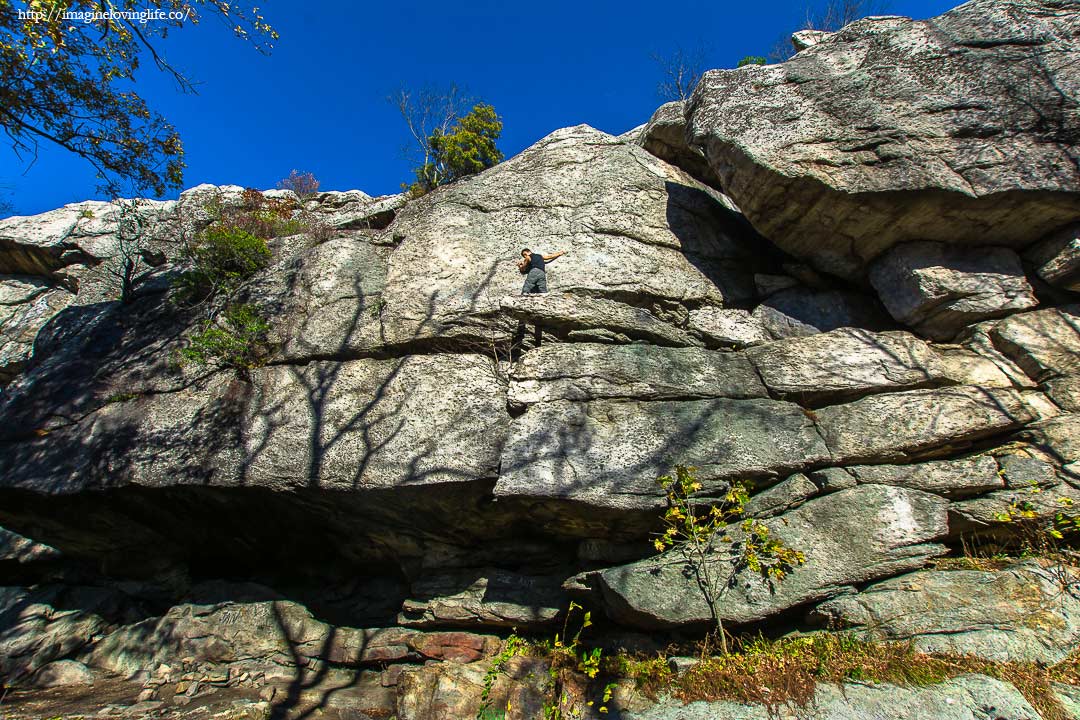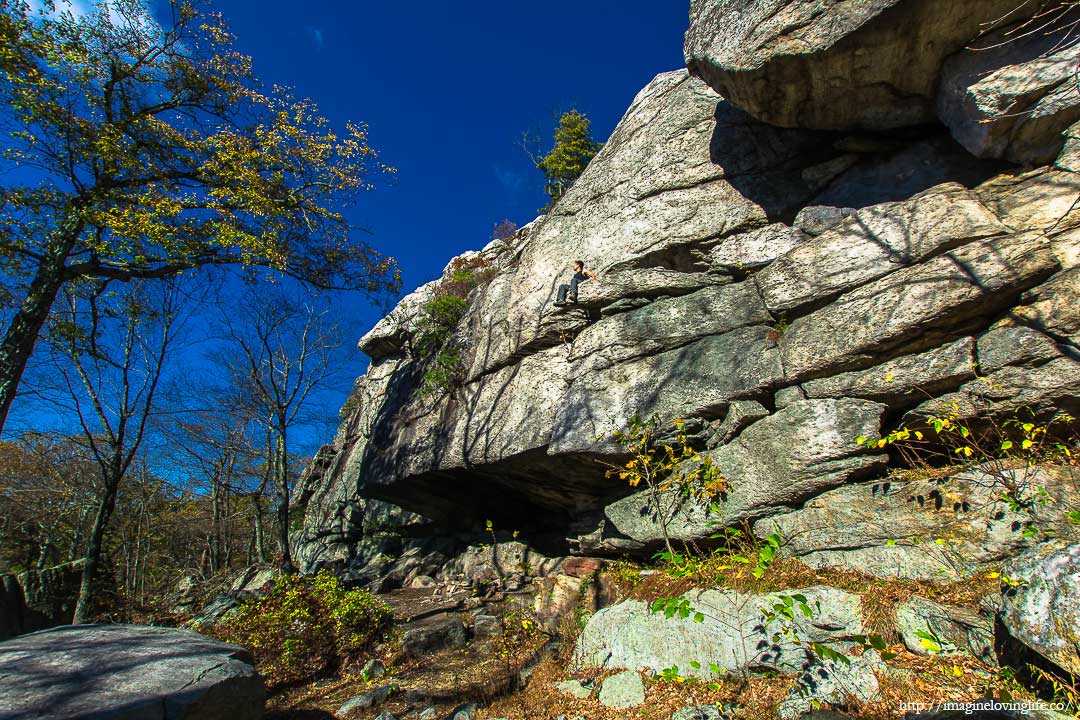
Choosing the right pair of hiking boots for your feet is very important since you are going to be using the hiking boots for a year or more. I usually use mine for 2 to 3 years before I replace them. Most of the time, you will get something decent without even doing any research. Most of the boots you will see in the Internet are pretty good and the reviews are pretty accurate. However, I think it is a good idea to know why some boots are more comfortable for you than others. There are also features that some boots will have that others will not. It is important to know as much as we can about hiking boots because this is the gear that we will rely on every time we take a hike for years to come.
Types Of Outdoor Footwear For Hiking The Trails
Day Hiking Boots
These boots are made for day hikers. They will often have a mid to high cut design to protect the ankles from getting injured. These are very flexible and versatile. You don’t need a lot of time to break them in. The high end ones or the expensive ones are often waterproof and breathable to allow the hiker to be able to navigate through muddy terrain without wetting their socks or feet. These boots can handle different kinds of terrain and will often have a lot of traction compared to most normal boots and work boots.
Backpacking Boots
Backpacking boots are often have a high cut to give the ankles more protection. They are meant to handle more weight or heavier loads than day hiking boots. These boots have stiffer midsoles and offer more stability and protection that hiking boots. These boots will often have some sort of waterproof protection and these are often breathable as well. They have features that are meant for long travel or walking lots of miles.
Mountaineering Boots
Mountaineering boots are often backpacking boots. They are more expensive and offer lots of protection against snow and harsh elements. These boots are often insulated to keep the feet warm and comfortable. Some backpacking boots have very very high cut. Mountaineering boots are insulated, waterproof, and have rigid soles. The insulation will vary from the type of mountaineering boots that are thinking of getting. All mountaineering boots can be equipped with a crampon so that the boots will have more traction. Not all day hiking boots and backpacking boots are crampon compatible.
Hiking Shoes
The lightest footwear that you can get out of all four types. Hiking shoes will not always have waterproof protection. They are meant to be lightweight and use less energy. There are even trail running shoes which allow you to run the trail. This is not possible with boots. Running the trails with boots is not recommended. Hiking shoes are great if you want to travel light and use less energy. Be warned, hiking shoes tend to not have the same traction as hiking boots.
6 Common Features People Are Looking For
Waterproof
The most common feature that I look for is whether the boots are waterproof. No matter what trail I get myself into, I always find myself in a terrain full of mud, pools of water, and I often times had to cross mini rivers to continue hiking the trail. I hate getting my feet wet. I hate getting my socks wet. My socks are not quick drying. They are made out of merino wool which wicks away moisture or sweat but not meant to be soaked in a river. If my boots are waterproof, I don’t have to worry too much. I can step on shallow mud, water, and even rivers and my feet will be protected from getting wet.
Traction
One of the main things that you need to look for is traction. There are lots of shoes and boots that do not have traction. They are not meant for hiking. I have seen a lot of people having problems bouldering, climbing small rocks, or even just going up the trail. The traction of your boots will help you hike the trails rather easily. They will prevent you from falling down, and prevent you from getting injuries while hiking. You don’t know what kind of trail you are going to experienced at times, it is better to have boots with traction so you don’t slide down a steep hill or a steep trail.
I take a lot of pictures near a cliff or an edge. If my boots do not have traction, I wouldn’t even attempt some of the pictures and selfies that I have taken. Traction is important and it helps me survive or it allows me to take good pictures. A good pair of boots with traction will help protect you from getting yourself injured due to the terrain.
Insulation
If you love hiking during the winter, then it is important that you get boots with insulation. Insulated boots are common with mountaineering boots. Insulation can help your feet feel more comfortable and your toes are not going to freeze or get frostbite. If your boots do not have insulation and you are still planning on hiking in the winter, then getting some thermal socks can definitely help. These type of socks are very good if you are working outside in the winter as well. They are pretty affordable as well.
Crampon Compatible
It is a lot better if your boots are crampon compatible when you are hiking in the winter. Some crampons just do not fit well with certain boots. You will end up destroying the crampon or destroying your boots. So if you are planning on hiking during the winter, make sure that your boots can handle a good and durable crampon for hiking. Crampons provide stability and it also allows you to conserve energy while hiking in the winter.
Comfort
We are all looking for comfortable hiking boots to wear. The simple fact is that we all want to have comfortable boots. The more comfortable the boots, the better. Most of us are going to be hiking for lots of miles. If our boots are not that comfortable, we are going to end up with sore feet, blisters, and our lower legs may even get injured. Comfort is very important and you are obviously not going to enjoy the hike if your boots are not that comfortable.
Style / Color
The last thing most people think about is the style and color. A lot of hiking boots often have traditional colors like black and brown. Picking a color like neon is also possible. There are lots of shoes and boots that are very bright and colorful. You do have a choice on what kind of brand, color and style of the hiking boots that you are thinking of getting. One thing you need to remember is that if you buy online, not all colors will have the same price. Some colors will be cheaper while some will be more expensive. You may have to pay $10 to $50 difference for certain types of outdoor boots.

Hiking Boots Upper Construction
Full Grain Leather
Full grain leather boots are often backpacking boots. Full grain leather give the boots more durability and resilience. This material is abrasion resistant and offer water repelling capabilities. Since this is very durable, it is common sense that you will have to spend more time breaking in your boots. If you are planning on going on a long backpacking trip, consider breaking in your boots first. Full grain leather is a little bit heavier than most materials and it is also not as breathable.
Split Grain Leather
This material is often used on boots that are very lightweight. This material offers amazing breathability when combined with some form of nylon mesh. This is not good at repelling water though. So most companies would put some sort of waterproof liner to make the boots waterproof. The cost of split grain leather is very cheap so the boots are often cheap as well. This type of material isn’t good at abrasion as well. So your boots are not going to last as long as boots made out of other materials. This is great for hikers who only hike during the weekends. I don’t recommend this for a backpacking trip that is very long.
Nubuck Leather
Leather that looks like suede is Nubuck leather. It is basically the buffed down version of a full grain leather. It has the same benefits of a full grain leather which makes this material very water repellent and abrasion resistant. It also offers more flexibility than the full grain leather, however, this type of leather is less durable than the full grain leather. Nubuck leather is pretty popular in a lot of hiking boots that you will see today.
Synthetics
Synthetic material can be a lot of things. It can be nylon, polyester, PU and can even be synthetic leather. Synthetics are very cheap which means that boots made out of synthetics will often be inexpensive as well. Synthetics are not very good at repelling water. They absorb water rather than repel it which is why boots that use synthetics will often have a waterproof membrane. Synthetics are becoming very popular as well since they are lighter than leather. Every hiker I know wants lightweight gear or the lightest possible gear they can get. Synthetics are easy to break in, flexible, comfortable, but they often don’t last long as well due to the way the materials are stitched together.
Waterproof Membranes
If you want waterproof boots, then the upper will have some sort of waterproof membrane which is often made out of Gore-Tex® or eVent®. Waterproof membranes will repel water and most of them are also breathable. However, they are not as breathable as nylon mesh. Most hiking boots will offer some sort of waterproof membrane while hiking shoes will often have nylon mesh to let the sweat evaporate.
Hiking Boots Midsole
The midsole of a hiking boot is the part that provides cushioning to the feet. This is the part that absorbs shock and provide stability to the boots.
Ethylene vinyl acetate (EVA)
This is the type of foam that is commonly used in running shoes, and casual or light hiking footwear. EVA is often very soft, and offer a lot of cushioning. Your boots will have varying layers of EVA depending on the style, brand and manufacturer of the boots. The softer the EVA, the more comfortable your feet will feel but at the same time, the faster it will break down. The more dense the EVA, the more support it will provide and the EVA will not break down as easily.
Polyurethane (PU)
Polyurethane lasts longer than EVA, provides more support and this material is commonly found in a lot of backpacking and mountaineering boots. PU is very dense, stiff and will require more time to break in your boots. This material will give your boots more weight as well since this is not that light. Polyurethane provides more support and great for people who are carrying lots of weight. However, boots that are made out of polyurethane midsoles are also more expensive.
Plates
Plates are often made out of nylon or TPU. They often provide protection against rocks, roots and uneven terrain. These are very common in trail hiking shoes which give the shoes more protection.
Shanks
Shanks are 3–5mm thick inserts that stiffen the midsole and protect the heel and arch. They vary in length and depends on the boots that you are getting. They are great for very rocky and uneven terrain. Shanks are often seen on trail running shoes and hiking shoes as well.

Insoles
Factory insoles are often made out of some form of EVA. They provide additional protection and comfort to the feet. However, you can get better insoles that fit your feet a lot better. There are lots of insoles from different companies that you can get. However, I love Superfeet Insoles. They provide so much comfort and my feet always feels like they are in heaven compared to the factory insoles that I often see.
Outsoles
The outsole of the boot is the part that makes contact with the ground or terrain. Outsoles are often made out of rubber. Different boots will have different densities of outsoles. The softer the rubber, the more traction it will provide but the rubber will break down more easily as well. Harder rubber will grip less but will definitely lasts more.
Lugs or Cleats
Lugs are a feature that a lot of backpacking and mountaineering boot outsoles will have. It is the protrusions on the sole of a shoe, or on an external attachment to a shoe, that provide additional traction on a soft or slippery surface. This is very common in a lot of soccer shoes and rugby shoes as well. They provide additional traction and allow the use to shed mud rather easily.
Heel Brake
A “heel brake” is a raised heel zone that provides amazing stopping characteristics to your boots and this reduces your chance of sliding and falling on steep descents. However, you may not see this feature in a lot of hiking footwear since most footwear will want to encourage your foot and toes to use their natural strength to stop yourself from sliding or falling down.
Last Thoughts
Hiking boots generally lasts for a long time. I hike a lot and my boots lasts for 2 or more years. You don’t need hiking boots that are $400 or more if you are not planning on hiking that much. There are a lot of $60 hiking boots that are very good as well. I tend to get the Salomon Quest 4D GTX. This is around $100. They release a new one every year but mine lasts so long that I don’t even replace it that much. This is extremely popular though. Whenever I hike, I often see a lot of other hikers have the same boots as mine. It is good but very common as well.
References:
- https://www.liveoutdoors.com/recreation/166865-anatomy-of-a-hiking-boot-uppers/
- http://us.hi-tec.com/resources/leather-vs-synthetic-hiking-boots/
- https://www.gearx.com/blog/knowledge/footwear/how-to-choose-hiking-footwear/
- https://www.merrell.com/US/en/blog?url=%2F/merrell_us/whats-inside-a-hiking-shoe/